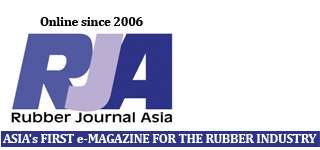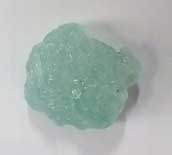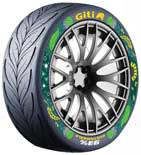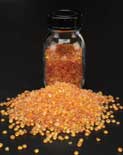From landfill to factory, the tyre sector is expanding the circular use of rubber throughout the supply chain to shrink its carbon footprint by using sustainable rubber materials in tyres, says Angelica Buan in this “green” outlook on the tyre sector.
With more than 2.3 billion tyres/year produced and consumed worldwide, only a fraction make it back into a recycling loop, leaving millions of tonnes languishing in landfills.
For the tyre sector, taking the wheel in the crusade to decarbonise, end-of-life tyres (ELTs) are being seen in a different light as a mine of high-value materials that can be recovered and repurposed into tyres and nontyre products, including construction materials, sports surfaces, and a plethora of other applications.
Green light for biobased rubber in tyres
Biobased rubber derived from plants and renewable sources are scoring attention as a greener alternative to traditional tyre materials.
Japanese tyremaker Yokohama Rubber Co has collaborated with elastomer producer Zeon Corporation on a project falls under Japan’s NEDO Green Innovation Fund Project, which aims to reduce greenhouse gas emissions to zero by 2050.
The companies in cooperation with leading Japanese research organisations are developing technology to produce butadiene and isoprene from plant-based and other sustainable materials. Zeon has reinforced its biotechnology focus with the construction of a bench-scale facility at its Tokuyama Plant for butadiene production from plant-based ethanol, aiming for operation in 2026 and commercialisation in 2034.
Meanwhile Italian tyre maker Pirelli has introduced the first standard production tyre for the global market made with more than 70% bio-based and recycled materials, including FSC (Forest Stewardship Council)– certified natural rubber. The P Zero tyre is developed specifically for Jaguar Land Rover (JLR) and includes recycled steel sourced partly from scrap metal, rice huskderived silica for wet performance, circular carbon black produced from ELT-derived pyrolysis oil, bio-circular polymers from used cooking oil, and bio-resins that optimise the balance between dry and wet performance. Pirelli aims to have all-natural rubber used in its European factories FSC-certified by 2026.
Along the same vein, Singapore-headquartered Indonesian tyre company Giti Tire has unveiled a prototype tyre made with 93% sustainable materials, which it said attests that “high-performance engineering and environmental responsibility can coexist”. The sustainable mobility concept combines bio-based polymer technology, advanced recycling processes, compound formulations, and next-generation manufacturing techniques. The prototype tyre exemplifies the Giti’s commitment to achieving its targets of 15% renewable recycled material in tyres by 2026, 30% by 2030 and 100% by 2050.
Recycled materials use in tyres
Meanwhile, German tyre maker and automotive parts supplier Continental is ramping up the use of renewable and recycled materials in its tyre production. Although the share of these materials averaged 26% in 2024, Continental expects to increase it by 3% by the end of 2025. By 2030, it is expected to rise to at least 40%.
Its car tyres contain up to 100 raw materials, forming as many as 20 customised rubber compounds per tyre. These compounds increasingly incorporate recycled additives and circular resins, which make the rubber more pliable and improve overall performance.
The company is turning to pyrolysis oil from ELTs and used cooking oil from suppliers like Poland’s Synthos and TotalEnergies Cray Valley providing these materials using a mass balance approach certified by ISCC Plus.
Continental is also the first tyre maker to use German materials firm Lanxess’s new Vulkanox HS Scopeblue rubber additive. This is the more sustainable, ISCC Pluscertified version of the Vulkanox HS (TMQ). The product is said to reliably protect rubber compounds during vulcanisation from influences such as oxygen and heat.
Compared to the conventionally manufactured product, Vulkanox HS Scopeblue has a CO2 footprint that is more than 30% lower, through the use of sustainable bio-circular acetone and renewable energies in production. The additive carries the Scopeblue label, which stands for products with a particularly low carbon footprint or a high proportion of circular raw materials. Lanxess uses the cradle-to-gate approach to calculate its carbon footprint, which includes Scope 1 (direct emissions), Scope 2 (indirect emissions from energy) and Scope 3 (other indirect emissions).
Continental adds it is increasingly using silica variants derived from the ashes of rice husks across its whole tyre portfolio. Rice husks are an agricultural by-product of the Asian agricultural industry and Italian risotto rice production. This type of silica is manufactured by chemical firm Solvay in Italy, among others.
In addition, Continental has joined forces with Pyrum Innovations, a specialist in the reprocessing of ELTs using thermolysis technology, to further optimise and expand the recycling of ELTs through pyrolysis. This process extracts the carbon black from the end-of-life tyres and prepares it for reuse in new tyre production.



